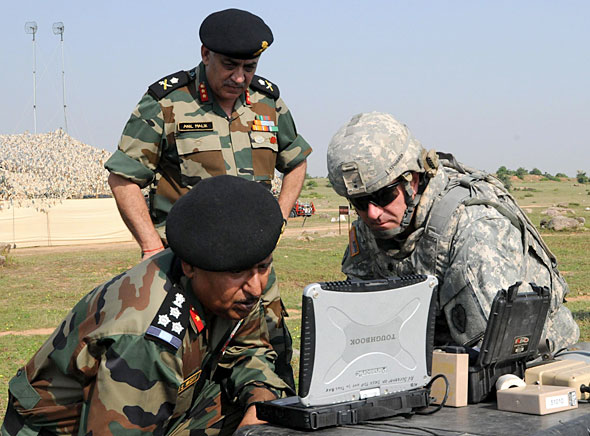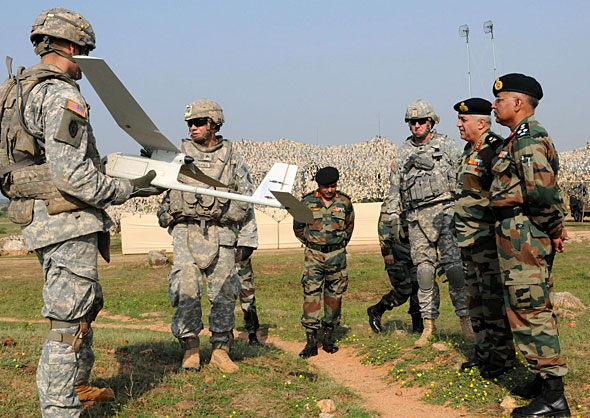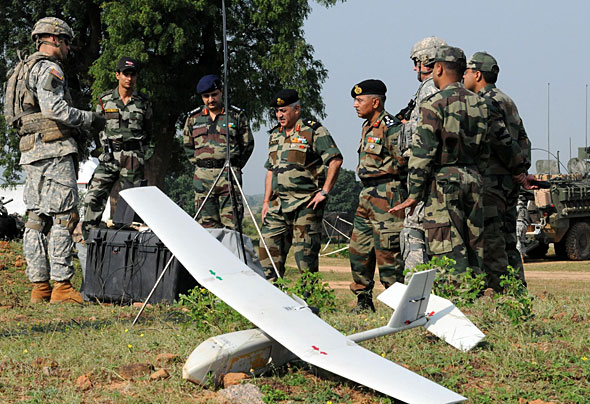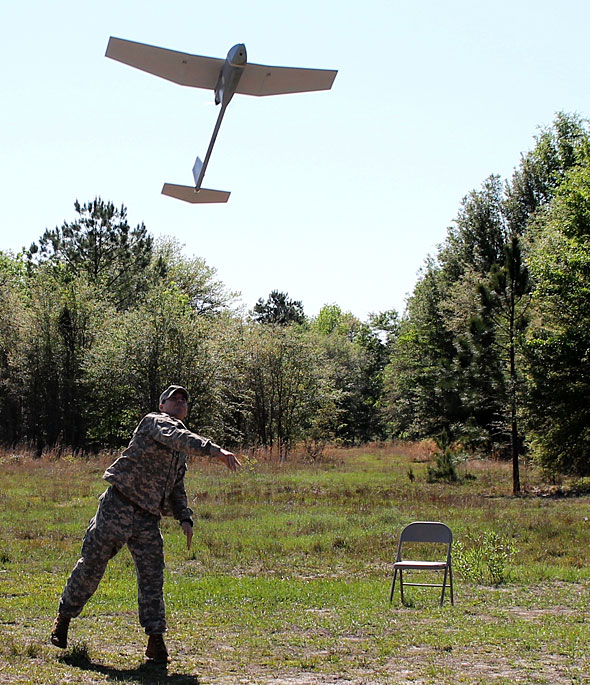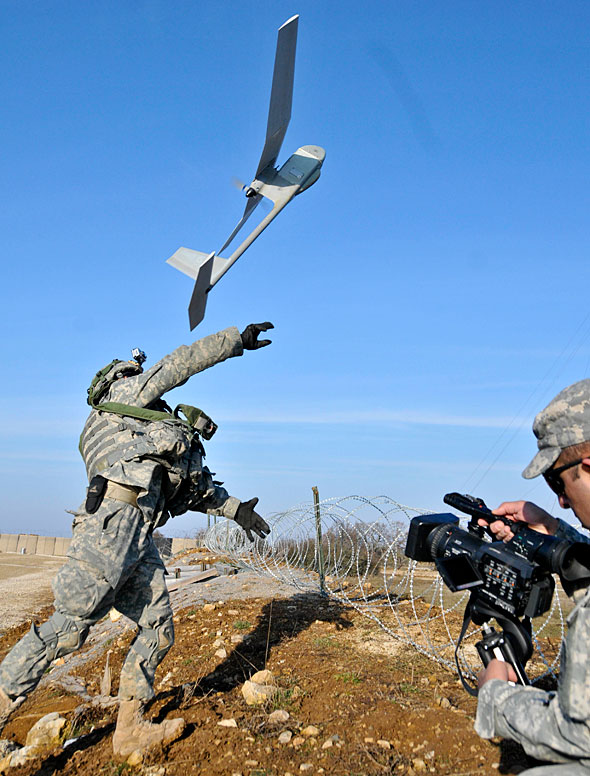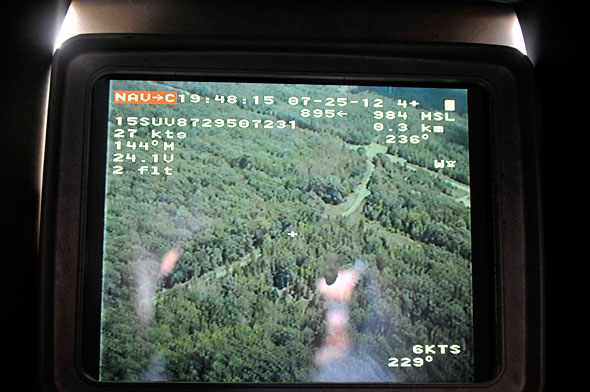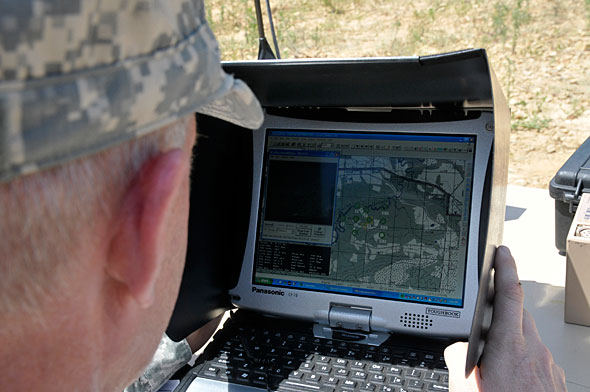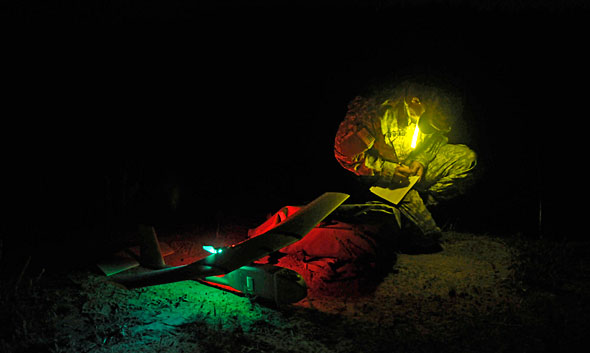INDIAN ARMED FORCES CHIEFS ON
OUR RELENTLESS AND FOCUSED PUBLISHING EFFORTS

SP Guide Publications puts forth a well compiled articulation of issues, pursuits and accomplishments of the Indian Army, over the years

I am confident that SP Guide Publications would continue to inform, inspire and influence.

My compliments to SP Guide Publications for informative and credible reportage on contemporary aerospace issues over the past six decades.
- Interim Defence Budget 2024-25 — An Analysis
- Union Defence budget 2024
- Indian Army: In quest of greater firepower and policy recommendations for gaps
- Indian Army Annual Press Conference 2024
- 6G will transform military-industrial applications
- Tata Boeing Aerospace Delivers 250 AH-64 Apache Fuselages, Manufactured in India
SP'S EXCLUSIVES
Raven UAV to be pushed under Indo-US DTTI

Considered one of the most combat-proven tactical surveillance mini drones in current operations, the AeroVironment RQ-11 Raven is not new to the Indian armed forces. In 2009, during the Yudh Abhyas at Babina in Uttar Pradesh, the Indian Army got a first hand look at Raven operations in a combat scenario. U.S. Armymen from the 14th Cavalry Regiment, Strykehorse, 2nd Stryker Brigade Combat Team, 25th Infantry Division, demonstrated use of the RQ-11 to soldiers and officers from the Indian Army's 94th Armored Brigade and other units under the 31st Armoured Division. The demonstrations were part of preliminary familiarisation both of the drone technology itself, as well as combat tactics involving hand-launched surveillance drones, a capability still unavailable to the Indian Army's infantry. While a slew of requirements have popped up over the years for hand-launched mini and micro surveillance unmanned air systems, none have been inducted. While several indigenous programmes exist, the U.S. sees the RQ-11 Raven as a 'low hanging fruit' for co-production in India under the ambitious Defence Technology & Trade Initiative (DTTI) pushed by the Obama Administration. The infantry's requirements of such technology, and the fact that it is perceived as an easy deliverable -- the US does not have strict export controls on the very modestly capable Raven, as it does with higher performance unmanned systems like the Global Hawk and Predator -- and will be looking to use it as a door-opener to other, more complex co-development and production understandings. Primarily used by the US military (including the US Air Force, Marines and Special Forces), the Raven has been exported widely, with close to 20,000 airframes delivered to date. Under the DTTI, the U.S. sees India as a possible new manufacturing hub for the drone and as a global supplier. The Indian Army, which has had a chance to not only observe Raven operations first hand, but also the chance to try out the technology both in India and the United States, is impressed by its capabilities. While air vehicle development is at a fairly advanced stage in India under the DRDO and NAL efforts, sensor and communication technology remains a concern, though impressive strides have been made by government-run agencies as well as private firms looking to supply the armed forces.

